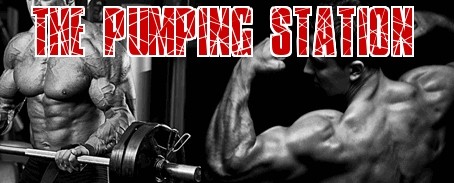Joe Weider Principles of Training
By Jay Horowitz
This article will attempt to explain the Weider principles of bodybuilding, created by Joe Weider, whom I consider the father of modern bodybuilding. The principles which follow are not for use by all. After the name of each principle, there will be a B, I, or A in parenthesis. These stand for beginner, intermediate, and advanced, respectively. There will also be an example given for each principle.
Pre-Exhaustion Training (A) - Prefatiguing a larger muscle with an isolation, single-joint movement so it can be even more exhausted by the compound movements to follow. When you do an exercise like the bench press that works not only the chest, but also smaller muscles, one of the smaller muscles might fail before your chest is fully exhausted. By doing a chest isolation exercise beforehand, you can fatigue your chest so you can do bench presses to chest failure, which is what you want.
Muscle Priority Training (I & A) - Training your most underdeveloped muscles first, so as to subject it to the maximum possible effort. If you have a weak body-part you want to improve, train it first in your workout, before you begin to fatigue.
Pyramiding (B, I, & A) - When using multiple sets for a given exercise, doing your first set with less weight for more reps, gradually increasing the weight and decreasing the reps over the remainder of your sets. This allows you to gradually warm up a muscle group, preparing it for the resistance to come in the next set.
Supersets (I & A) - Working opposing muscle groups in back-to-back fashion, taking as little rest as possible in between sets. Alternating sets between opposing muscle groups - such as biceps and triceps/chest and back - greatly increases intensity. When you train one muscle group, the other is recovering (sometimes even being stretched) as you complete the set. With two muscles or muscle groups being worked, more blood is pumped into the area.
Tri-Sets (A) - Doing three sets in a row for the same body-part with as little rest as possible in between sets. Three exercises in a row more thoroughly exhaust the muscle. This training technique is so demanding that it should only be done on occasion, and is more often used by bodybuilders in their pre-contest training. It is not optimal for muscle building.
Set System Training (B, I, & A) - Simply doing more than one set for each exercise. This is the opposite of high-intensity training, which involves performing one set per exercise. Often, the first couple of sets aren't enough to fatigue your muscle.
Giant Sets (A) - Doing 4-6 exercises for the same body-part with as little rest between sets. Giant sets are used to create overwhelming stimulation to a body-part and totally exhaust the muscles involved. This technique should only be used occasionally as your body needs time to recover from this level of effort. This type of training is used more for muscular endurance and calorie burning then for putting on muscle size.
Instinctive Training (A) - This involves experimenting with your workouts and paying attention to how your body reacts to certain types of training. The fundamentals of bodybuilding training are the same for everyone, but we are all unique. The further along you get in your training, the more you have to fine tune your workouts to suit your needs. It takes time to develop this "feel" and have this type of knowledge. Whatever you are used to is going to feel best for you, but you have to figure out what really produces the best results for you and make adjustments accordingly.
Compound Sets (I & A) - Alternating two exercises for the same muscle group, taking as little rest as possible between each set. Each same-bodypart exercise fatigues the muscle involved in slightly different ways, so doing two exercises in a row with little rest inbetween achieves a deeper level of stimulation and muscle pump. Keep in mind that I do not personally agree with the rest aspect of this principle. That is just how Mr. Weider presented it.
Staggered Sets (I & A) - Training smaller, slower-developing bodyparts like calves or forearms in between all sets for your major bodyparts. Arnold Schwarzenegger relied on this principle early in his career to develop his calves. He would do a set for chest, back or shoulders, then he would do a set of calf raises while his major muscle group was recovering for the next set. He'd then alternate sets for the working bodypart and calves. His calves got plenty of time to recover in-between sets and by the end of his workout, he would have subjected them to as many as 15-20 total sets of various calf raises.
These are only ten of the Weider principles. Use the label. Good luck with bodybuilding, and feel free to email me if you have any questions.
Click Here to Sign Up for Your Free Bodybuilding Magazine Subscription
